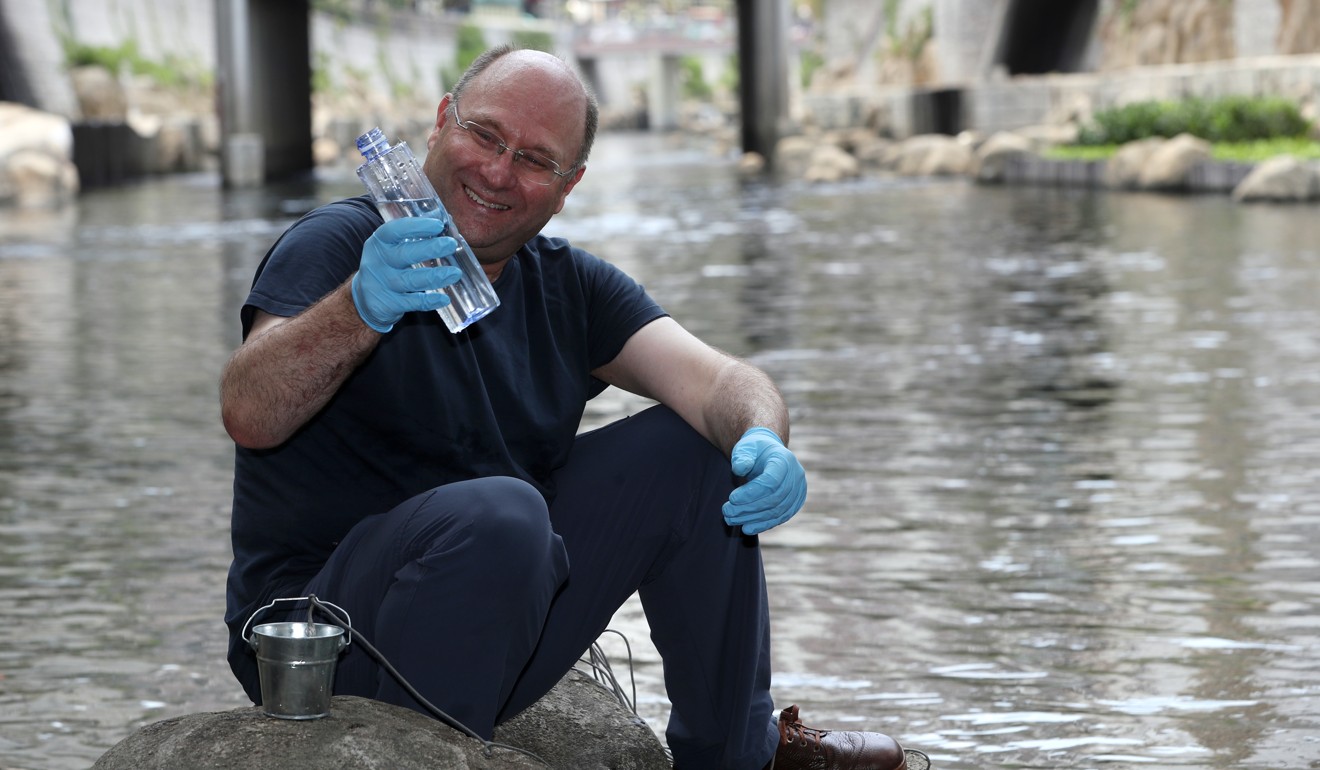
Breeding ground for superbugs? Hong Kong river’s unsafe antibiotic levels
- Kai Tak River the ninth most antibiotic-filled in global study of pharmaceutical contamination
- Experts warn of risk the medicines could help generate drug-resistant bacteria
A Hong Kong river has antibiotics exceeding safe levels by up to five times, a global study has found, with researchers raising concerns that it could contribute to the growing problem of superbugs.
Kai Tak River, in the heart of a key redevelopment area in east Kowloon and flowing into the Victoria Harbour, was the ninth most antibiotic-polluted in the study of pharmaceutical contamination in streams, which covered 165 rivers in 72 countries.
Experts urged more monitoring, saying there was a risk the life-saving medicines could help generate antibiotic-resistant bacteria in the long term and disrupt the ecological balance in streams.
The research, the first to map the scale of such contamination in the world’s rivers, was conducted by the department of environment and geography at the University of York, in Britain. It examined urban waterways for 61 kinds of drug, of which 14 were commonly used antibiotics.

In Hong Kong, nine antibiotics were found in Kai Tak River and four in Tai Po’s Lam Tsuen River, from samples taken last year, data provided to the Post showed.
Kai Tak River, once a notoriously smelly nullah near the former airport, has been cleaned up, deepened and revitalised to become a landmark with aquatic life and plants.
However, its levels of two antibiotics – Ciprofloxacin and Clarithromycin – were found to exceed “safe” levels by five times and four times respectively.
Exceeding safe levels means there is a risk of having a significant effect on organisms or the well-being of the river, according to standards set by the AMR Industry Alliance, a coalition of more than 100 biotechnology and pharmaceutical companies.
We all use pharmaceuticals at some stage in our lives, but we rarely think about what happens once you’ve used them
Antibiotics in the Tai Po river did not exceed safe levels.
Alistair Boxall, a professor of environmental science from the university, who co-led the study with his colleague Dr John Wilkinson, said the main concern about the high levels would be a possible rise of antimicrobial resistance.
“We all use pharmaceuticals at some stage in our lives, but we rarely think about what happens once you’ve used them,” Boxall said last week.
“It’s possible the levels of those two drugs in the river are elevating levels of resistance in the river.”

Antibiotics are useful for killing bacteria, but overuse of them can force the bacteria to evolve and become more resistant, attaining superbug status.
There are concerns that superbugs in the natural environment could find their way into food or water and infect humans. Over time, a gradual build-up of resistant bacterial populations could make it harder for doctors to treat infections.
The World Health Organisation in April branded superbugs a “global emergency”, with the UN estimating 700,000 people worldwide die of antibiotic-resistant infections annually.
Crowded hospitals to blame for superbug surge, says top Hong Kong doctor
But more studies need to be done to examine the links between how humans are exposed – such as if they swim or wash clothes in contaminated water – and whether it results in any antimicrobial resistance in people, Boxall said.
The study, which researchers aim to publish in a paper in August, found antibiotics in 65 per cent of all sites monitored worldwide. While Kai Tak river ranked ninth, Bangladesh topped the list, with concentrations of Metronidazole – used for treating skin and mouth infections – 300 times the safe level.
Poorer countries in Asia and Africa generally had high concentrations as they lacked advanced technology to treat sewage or had lax regulations on illegal dumping. But there were unsafe levels in developed cities like Hong Kong and Vienna, which experts said could reflect widespread use of antibiotics.
Professor Paul Lam Kwan-sing, director of City University’s state key laboratory of marine pollution, said it was not surprising to find antibiotics in Kai Tak, because of the city’s high population density and widespread antibiotic use.
Antibiotics ingested by people are not broken down before they are excreted. Waste water treatment plants, unable to eradicate them, discharge them into drainage channels.
Lam, who was not involved in the study, said that while the concentrations in rivers may not be high enough to kill organisms, they could disrupt the composition of bacteria, affecting the structure and function of the ecosystem.
Such bacteria plays an important role in ecological processes, such as helping to recycle carbon and nutrients back into the ecosystem, he said.
“There’s a risk [of some significant impact on the health of the river]. Is it a high risk or low risk? I think it’s too early to say,” he said.
The government should collect more water samples during different seasons and incorporate monitoring antibiotics into its current monitoring programme, Lam said, to find the source and stop it.
Top microbiologist Dr Ho Pak-leung said there was no direct risk to people at the moment at Kai Tak, as very few would swim or drink water from there.
But he agreed there was a risk of antimicrobial resistance in the long run.
Experts said the government could do more to educate residents on the proper disposal of antibiotics – such as not flushing them down the toilet – while also looking into investing in better waste treatment facilities.
“We should do everything we can to reduce pharmaceuticals, and antibiotics in particular, getting into the environment, because it’s ultimately going to affect the human population,” Lam said.


